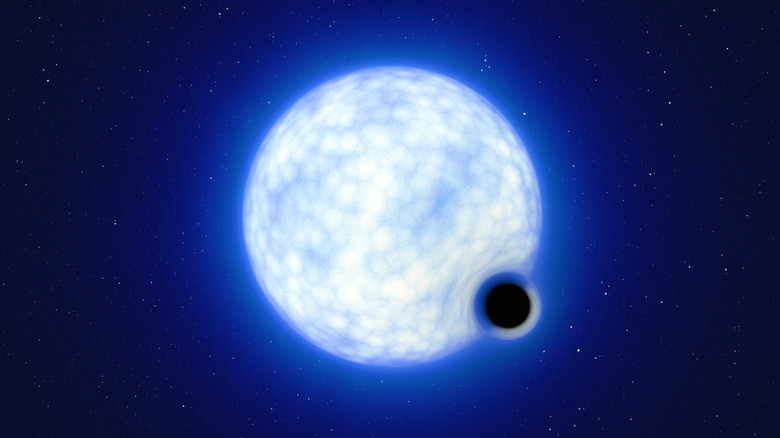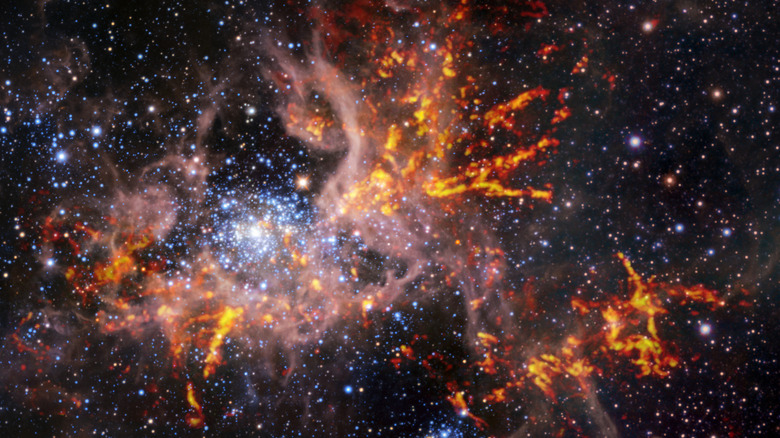Scientists Spot First Sleeping Black Hole In Our Galactic Backyard
A majority of the known galaxies in our observable universe contain a supermassive black hole at their center. Each supermassive black hole can exist in different states ranging from dormant to hyperactive. A dormant black hole is one that is not feasting hungrily on the matter that surrounds it and is identified by the low amount of X-rays it emits. Now, scientists claim to have spotted the first such black hole in Earth's own backyard.
An international team of scientists claims to have come across "the first 'dormant' stellar-mass black hole to be unambiguously detected outside our galaxy." Located in the Large Magellanic Cloud galaxy (a cosmic neighbor of our own Milky Way), the sleeping giant is roughly nine times the mass of our Sun. It is said to orbit a blue star that is a mass approximately 25 times that of our Sun.
8. Video credit: @ESO /Digitized Sky Survey 2/N. Risinger (https://t.co/2Zlf8bTEVt)/R. Gendler, ESO/M.-R. Cioni/VISTA Magellanic Cloud survey. Acknowledgment: Cambridge Astronomical Survey Unit. Music: John Dyson pic.twitter.com/Tp5Dw0UCfn
— ESO (@ESO) July 18, 2022
Named VFTS 243, the black hole in question was discovered using the Very Large Telescope (VLT) at the European Southern Observatory and comes from a study spanning six years of observations of the Tarantula Nebula. Interestingly, the latest black hole discovery comes courtesy of a team that has garnered a reputation for busting and disproving questionable black hole discovery claims.
A needle in the cosmic haystack
But there is something even more mind-bending going on here. A black hole is scientifically known to be the remnant of a massive star that collapses upon itself due to strong gravitational pull, a process that involves a huge explosion we know as a supernova. However, the VFTS 243 black hole's origin star appears to have collapsed without any trace of an explosion.
The team behind the discovery hasn't found any evidence of ejected material or black-hole kick that could establish an explosion scenario. It's a fascinating finding because VFTS 243 challenges the theory of supermassive black hole formation following a stellar explosion. "Evidence for this 'direct-collapse' scenario has been emerging recently, but our study arguably provides one of the most direct indications," said study leader Tomer Shenar.
The research paper (PDF), which has been published in Nature Astronomy, suggests that this is "the first X-ray quiescent O+BH binary reported outside the Milky Way, and, considering uncertainties regarding Galactic candidates, potentially the first X-ray quiescent O+BH binary ever found." Here, O refers to the O-type star while BH refers to its black hole companion.

